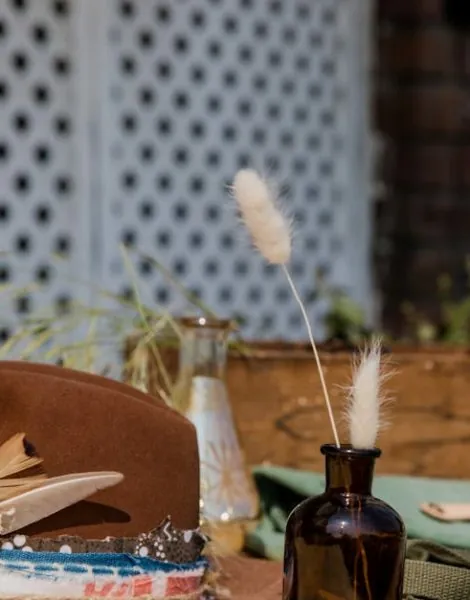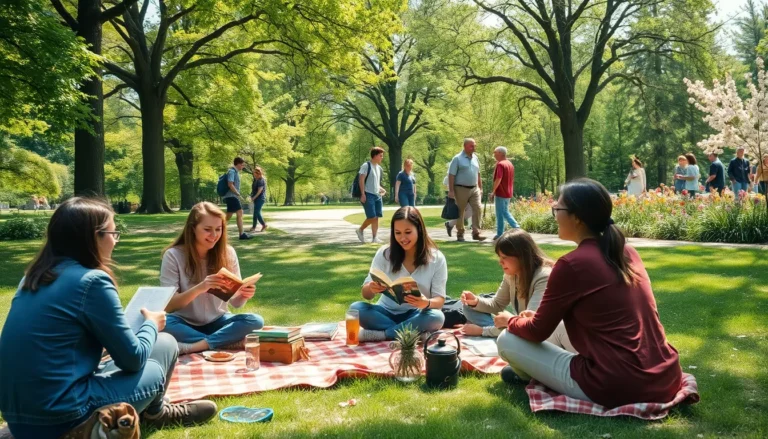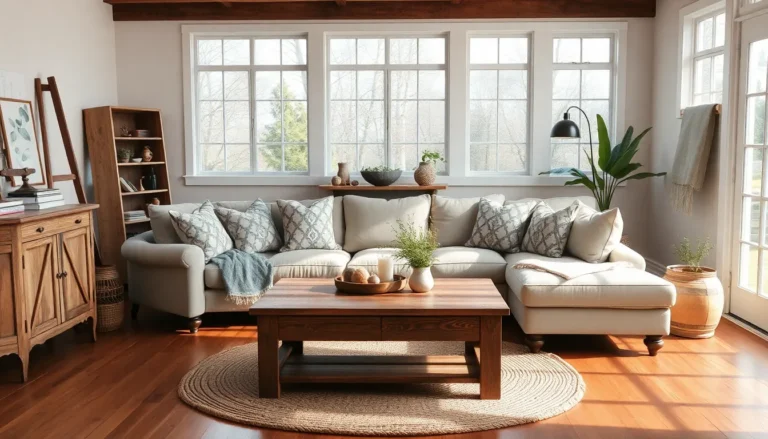Imagine stepping into a cozy cabin where the scent of pine mingles with the warmth of a crackling fire. Rustic decor isn’t just a style; it’s an invitation to embrace nature’s charm right in your home. With the right tips, you can transform any space into a haven that feels like a weekend getaway—without the need for a GPS or overpriced cabin rentals.
Table of Contents
ToggleUnderstanding Rustic Decor
Rustic decor emphasizes simplicity and natural elements. It draws inspiration from rural life, utilizing materials like wood, stone, and metal. Earthy tones and textures create a warm atmosphere while enhancing comfort. This style often features handcrafted items, which add character and create a sense of history.
Characterized by its laid-back charm, rustic decor often incorporates vintage or reclaimed furniture. Pieces like distressed wood tables or wrought iron lighting fixtures contribute to the overall aesthetic. Plants and natural elements, such as branches or stones, frequently appear. These organic touches establish a connection to nature within interior spaces.
Textures play a crucial role in this design approach. Soft fabrics like burlap and linen can coexist with rough surfaces, creating visual interest. Mixing different textures adds depth and draws the eye throughout a room. Warm lighting enhances the cozy feeling, with options ranging from candles to lanterns.
Color palettes in rustic decor lean toward warm neutrals, with shades like taupe, beige, and deep greens. Accents of muted colors also serve to complement natural materials. Artwork often features landscapes or nature scenes, aligning with the overall theme.
To incorporate rustic decor into a home, focus on layering elements thoughtfully. Select a few statement pieces like an oversized wall clock or a unique coffee table. Consider displaying locally sourced items that reflect the environment. These choices contribute to an authentic and inviting atmosphere.
Key Elements Of Rustic Decor
Rustic decor combines natural elements and simplicity, creating an inviting atmosphere. Key components include natural materials and earthy color palettes that work together to establish a cozy environment.
Natural Materials
Natural materials form the foundation of rustic decor. Wood is a primary element, often used for furniture, beams, and accents, providing warmth and durability. Stone adds texture and a sense of permanence in elements like fireplaces and walls. Metal accents, from wrought iron to weathered finishes, introduce industrial charm. Handcrafted items showcase artisanal craftsmanship and unique character. Combining these materials fosters a connection to nature, reinforcing the rustic theme throughout the space.
Earthy Color Palettes
Earthy color palettes enhance the rustic aesthetic. Warm neutrals, such as taupe, beige, and soft browns, evoke a sense of comfort and calm. Adds of muted colors, including forest greens and deep blues, complement the overall design and harmonize with natural materials. Colors should reflect the surroundings, mimicking landscapes and elements found outdoors. Layering these shades creates depth and interest, inviting warmth into living spaces.
Incorporating Rustic Decor Tips
Rustic decor enhances spaces with warmth and character, making homes feel inviting and cozy. Transitioning to rustic elements involves thoughtful consideration of furniture and lighting.
Furniture Choices
Choosing the right furniture pieces brings the rustic style to life. Reclaimed wood tables, with their unique textures, serve as stunning focal points. Worn leather sofas provide comfort and add a vintage charm. Selecting pieces with organic lines and finishes increases the natural vibe in the space. Mixing furniture styles, such as pairing rustic tables with modern chairs, adds interest while maintaining an inviting atmosphere. Emphasizing handcrafted items ensures authenticity and supports local artisans, adding a personal touch to the decor.
Lighting Options
Lighting plays a significant role in achieving a rustic ambiance. Opting for warm-toned bulbs creates a cozy glow. Statement chandeliers made of wrought iron or reclaimed wood become eye-catching features. For softer lighting, consider using lanterns and candles to add warmth and intimacy. Placing fixtures at varying heights introduces depth and creates a layered lighting effect. Accent lights, such as sconces made from natural materials, enhance the rustic theme while adding functionality to the space.
Creating Balance In Rustic Spaces
Achieving balance in rustic spaces requires careful consideration of various elements. Focus on combining different textures to create visual harmony. For example, soft fabrics like linen or cotton work well alongside rough wood and stone surfaces. Incorporating plants adds a touch of nature, bridging indoor and outdoor elements effectively.
Utilize a cohesive color palette to enhance visual appeal. Earthy tones should dominate with splashes of muted colors providing accents that complement natural materials. Strive for a balanced distribution of colors across the space, ensuring no single element overwhelms another.
Furniture choices play a key role in establishing balance. Selecting a mix of vintage and modern pieces can create an intriguing aesthetic. Distressed wood furniture pairs wonderfully with metal accents, bringing together diverse styles for an inviting look. Distribute larger items evenly to maintain flow and prevent the room from feeling cluttered.
Lighting fixtures enhance the rustic atmosphere while contributing to balance. Incorporate varying heights and designs to create depth. Statement pieces like wrought iron chandeliers can serve as focal points while soft lighting from candles or lanterns creates a warm ambiance. Ensure that lighting complements surrounding elements without overpowering them.
Incorporate functional décor pieces that add character without compromising simplicity. Displaying handcrafted items or local crafts can personalize the space. Integrate these elements seamlessly into the décor to maintain the rustic theme while showcasing individuality.
Consider the arrangement of space to enhance comfort and accessibility. Creating cohesive zones within the area ensures a natural flow for movement and encourages conversation. Balance between open spaces and cozy nooks fosters an inviting atmosphere conducive to relaxation.
Embracing rustic decor transforms any space into a warm and inviting retreat. By focusing on natural materials and earthy tones, individuals can create a cozy atmosphere reminiscent of a charming countryside escape. Thoughtful layering of textures and careful selection of furniture enhance the overall aesthetic while ensuring comfort and accessibility.
Incorporating unique handcrafted items and vintage pieces adds character and history to the decor. With the right lighting and a balanced color palette, a rustic style can feel both authentic and welcoming. By following these tips, anyone can effortlessly cultivate a serene environment that reflects the beauty of nature and the charm of rustic living.









